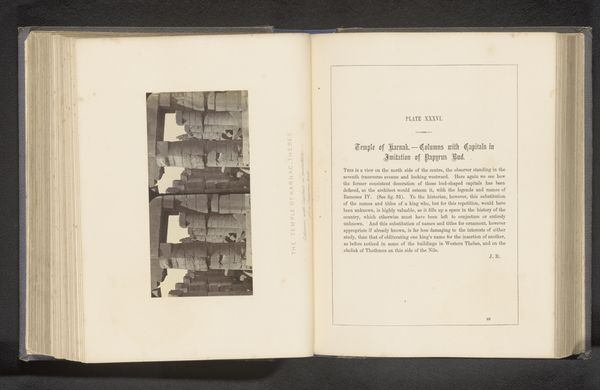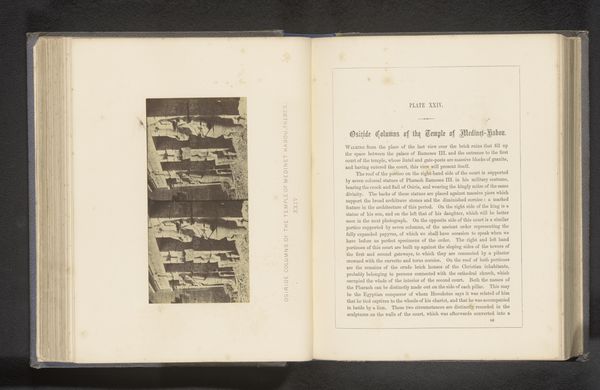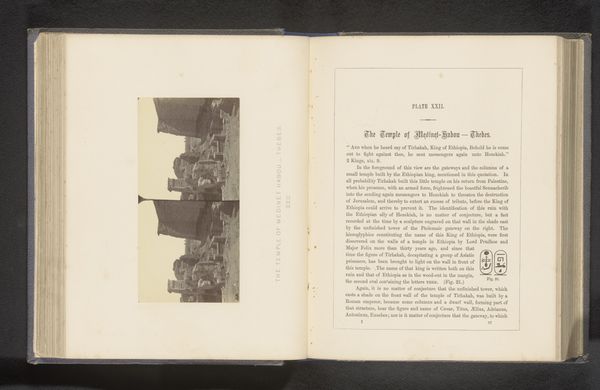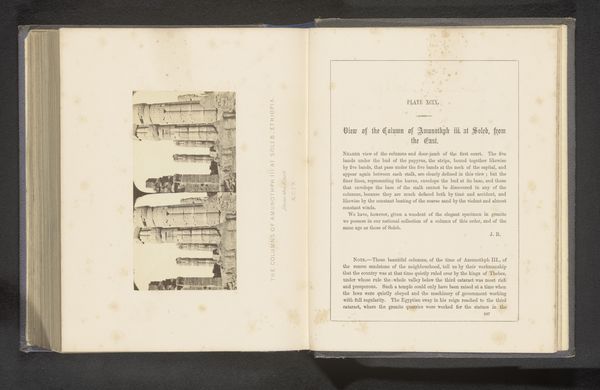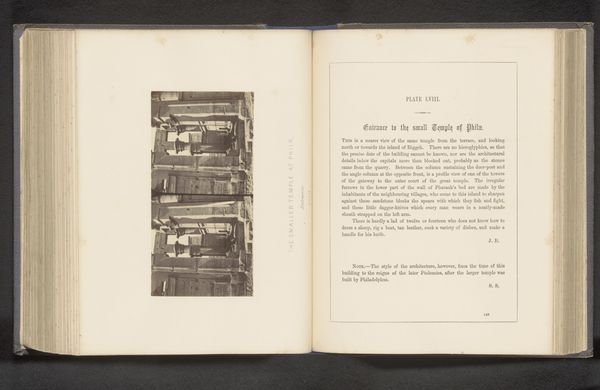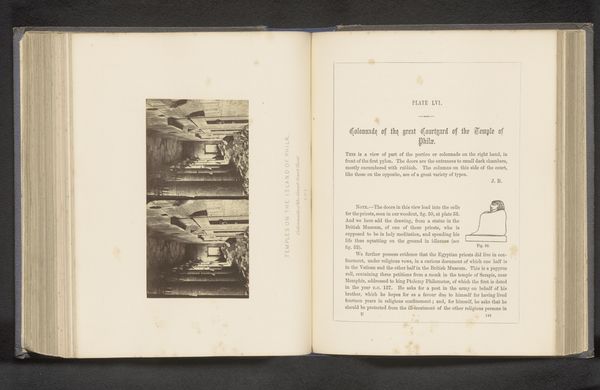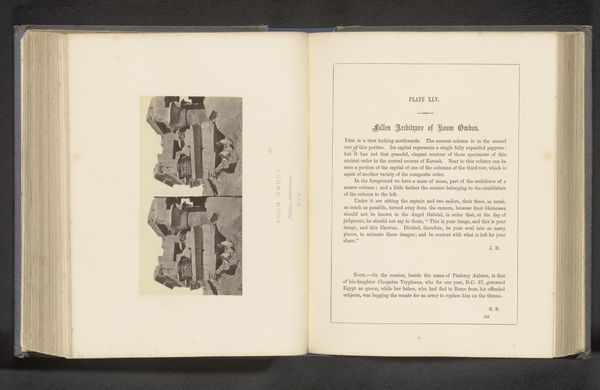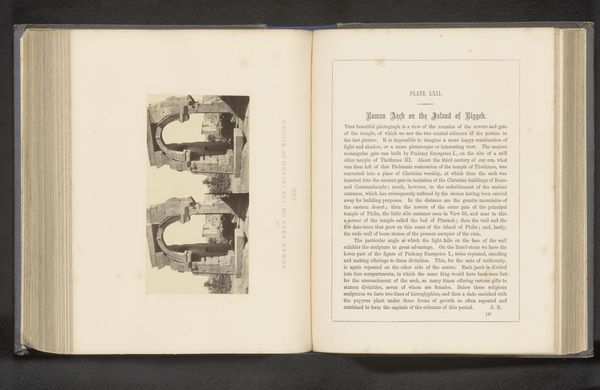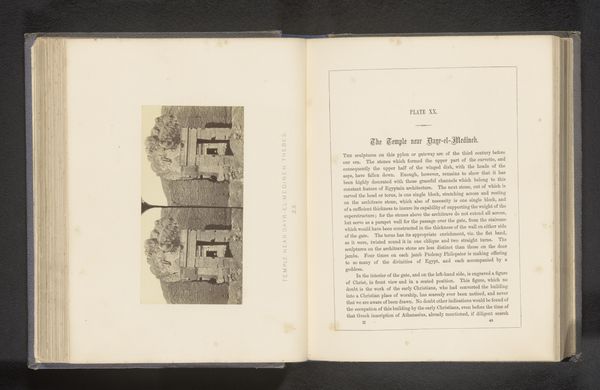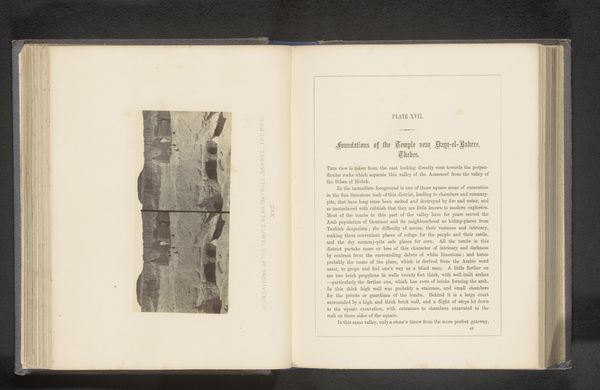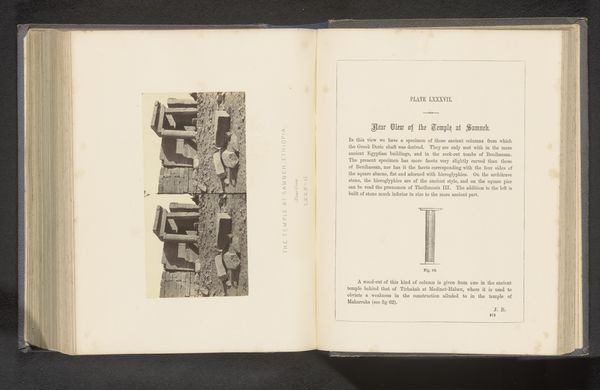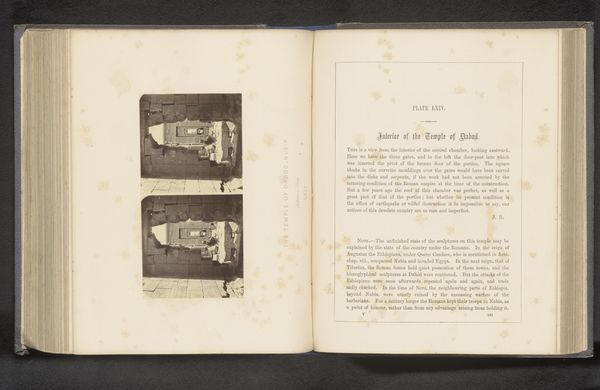
print, photography, gelatin-silver-print, architecture
#
aged paper
#
homemade paper
# print
#
sketch book
#
hardpaper
#
landscape
#
ancient-egyptian-art
#
photography
#
personal sketchbook
#
journal
#
fading type
#
ancient-mediterranean
#
stylized text
#
gelatin-silver-print
#
thick font
#
architecture
#
historical font
Dimensions: height 70 mm, width 145 mm
Copyright: Rijks Museum: Open Domain
This stereograph of the Temple at Thebes was created by Francis Frith, a prominent British photographer, in the 19th century. The image, presented in a double format typical of stereoscopic views, captures the temple’s entrance in a monochromatic palette. The composition emphasizes the temple's structure, with its heavy, geometric forms and detailed carvings. The use of light and shadow articulates the depth and texture of the ancient stone, evoking a sense of timelessness and monumental presence. Frith's choice to present the temple through stereography is particularly relevant. The stereoscopic effect creates an illusion of depth, immersing the viewer in the scene. This technique aligns with broader artistic and philosophical concerns of the time, particularly around realism and the representation of space. The photograph not only documents the temple but also invites a reflection on how we perceive and interact with historical and cultural artifacts. The photograph functions as a sign, encoding layers of cultural and historical meanings that continue to resonate.
Comments
No comments
Be the first to comment and join the conversation on the ultimate creative platform.
